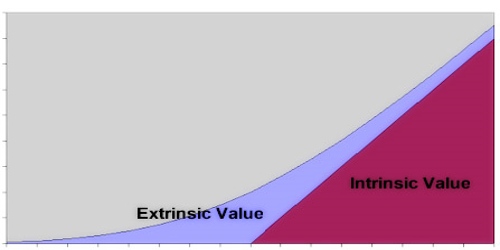The Net Present Value (NPV) is a means of evaluating the actual long-term profitability of an investment or a project through the initial outflow, future cash flows, and the time value of money. Also known as the discounted cash flow method, it backs the capital budgeting decisions of a company.
It is an effective means of forecasting the future outcome of a particular investment project. However, it cannot be taken as a single-handed tool for financial analysis since it is paired up with various other practices.
The net present value (NPV) method can be a very good way to analyze the profitability of an investment in a company or a new project within a company. But like many methods in finance, it is not the end-all; be-all solution it carries a few unique advantages and disadvantages that may not make it useful for some investment decisions.
Advantages of Net Present Value (NPV) –
The net present value of a project in business guides the finance team for making wise decisions. Let us now go through the numerous benefits it has for the company, in the long run:
- Simple to Use: The net present value method is easy to apply to a real business project if the cash flows and discount rate are known.
- Provides Time Value of Money: This method takes into consideration the effect of inflation on the future profitability of the project, thus estimating the time value of money.
- Customization: In NPV, the discount rate can be adjusted according to the risk prevailing in the industry, along with various other factors, to obtain an appropriate output.
- Determines Investment Value: The earnings throughout the project’s life span can be acquired by using the NPV method, which facilitates the company to know the future value of a specific investment.
- Comparable: It facilitates the comparison of values generated in the future, by two or more similar projects to find out the most feasible option.
- Comprehensive Method: It finds the present value of a project by examining the effect of various factors like risk, cash outflows, and inflows.
- Measures Profitability: It is one of the most proficient methods of determining the actual profitability of a project in its lifetime.
- Identifies Risk: In the absence of NPV, the managers would fail to estimate the risk of loss or meagre profitability in case of a long-lived project. It is otherwise possible by identifying the project with negative or zero NPV.
- Reinvestment Assumption: The net present value is quite logical since, here the cash flows are not expected to be reinvested in the financial market, as done in the internal rate of return.
The obvious advantage of the net present value method is that it takes into account the basic idea that a future dollar is worth less than a dollar today. In every period, the cash flows are discounted by another period of capital cost. Actually, the NPV method takes into consideration the cost of capital and the risk inherent in making projections about the future.
In general, a projection of cash flows 10 years into the future is inherently less certain than cash flows projected next year. Cash flows that are projected further in the future have less impact on the net present value than more predictable cash flows that happen in earlier periods.
Disadvantages of Net Present Value (NPV) –
The biggest disadvantage to the net present value (NPV) method is that it requires some guesswork about the firm’s cost of capital. Assuming a cost of capital that is too low will result in making suboptimal investments. Assuming a cost of capital that is too high will result in forgoing too many good investments.
The net present value (NPV) is an effective means of evaluating a project’s profitability; however, it has certain drawbacks. These are as follows:
- Forecasting Errors: While assessing the viability of a long-lived project, the estimation of cash flows may not be that accurate for the later years.
- Minimum Contribution to Shareholder’s Value: The shareholder’s value maximization is the result of the overall growth of a company, whereas a high NPV contributes little towards it.
- Depends Upon Discount Rates: Since this method is based on discount rates, even a slight change may result in an entirely different NPV.
- Neglects Sunk Cost: The sunk cost like research and development, trial, etc. incurred before the project starts, is mostly high. This cost is wholly ignored under the computation of NPV.
- No Effect on EPS and ROE: Often, the projects with high NPV but the short duration may not enhance the earning per share and return on equity.
- Incomparable for Differing Project Size: The concept of capital rationing is applied in NPV; therefore, the projects which do not lie under the capital budget limit cannot be compared under this method.
Net present value (NPV) only takes into account the cash inflows and outflows of a particular project. It does not take into account any hidden costs, sunk costs or other preliminary costs incurred in relation to the particular project. Therefore, the profitability of the project may not be highly accurate.
In addition, the NPV method is not useful for comparing two projects of different sizes. Because the NPV method results in an answer in dollars, the size of the net present value output is determined mostly by the size of the input. Therefore, it becomes essential to analyze the net present value of future cash flows.
Information sources:
















